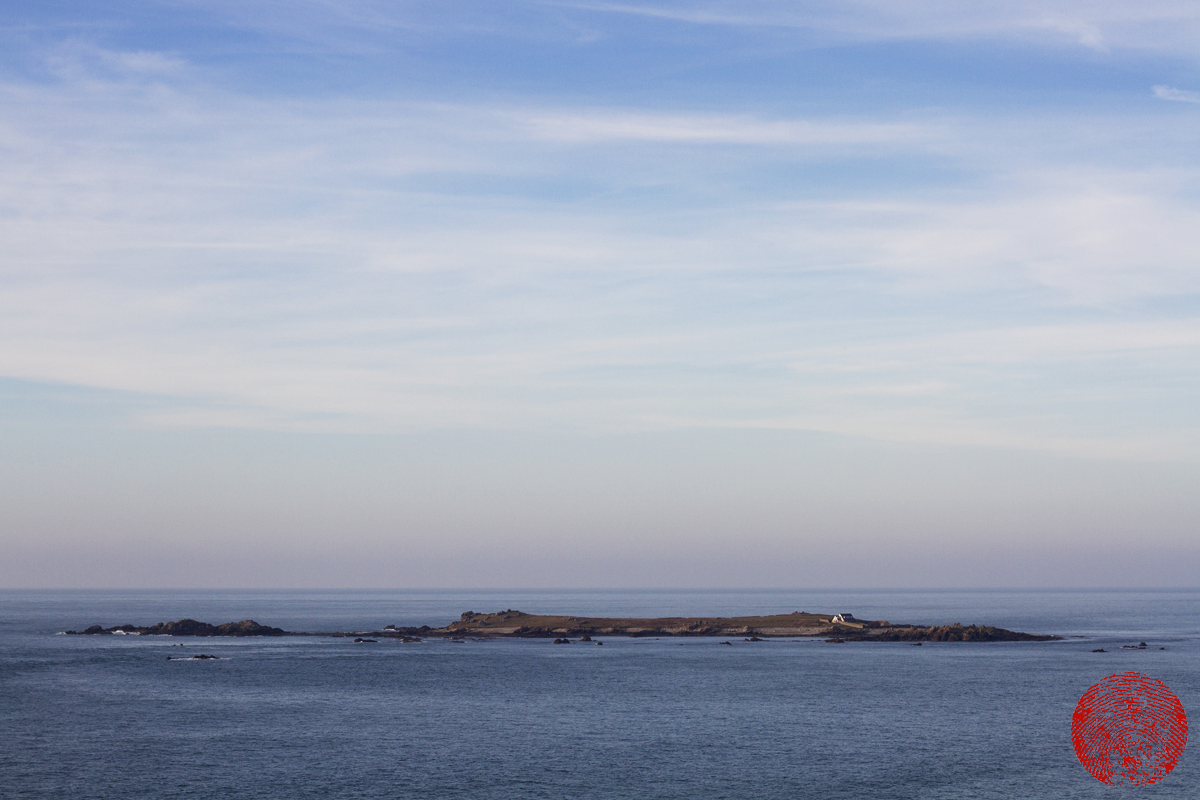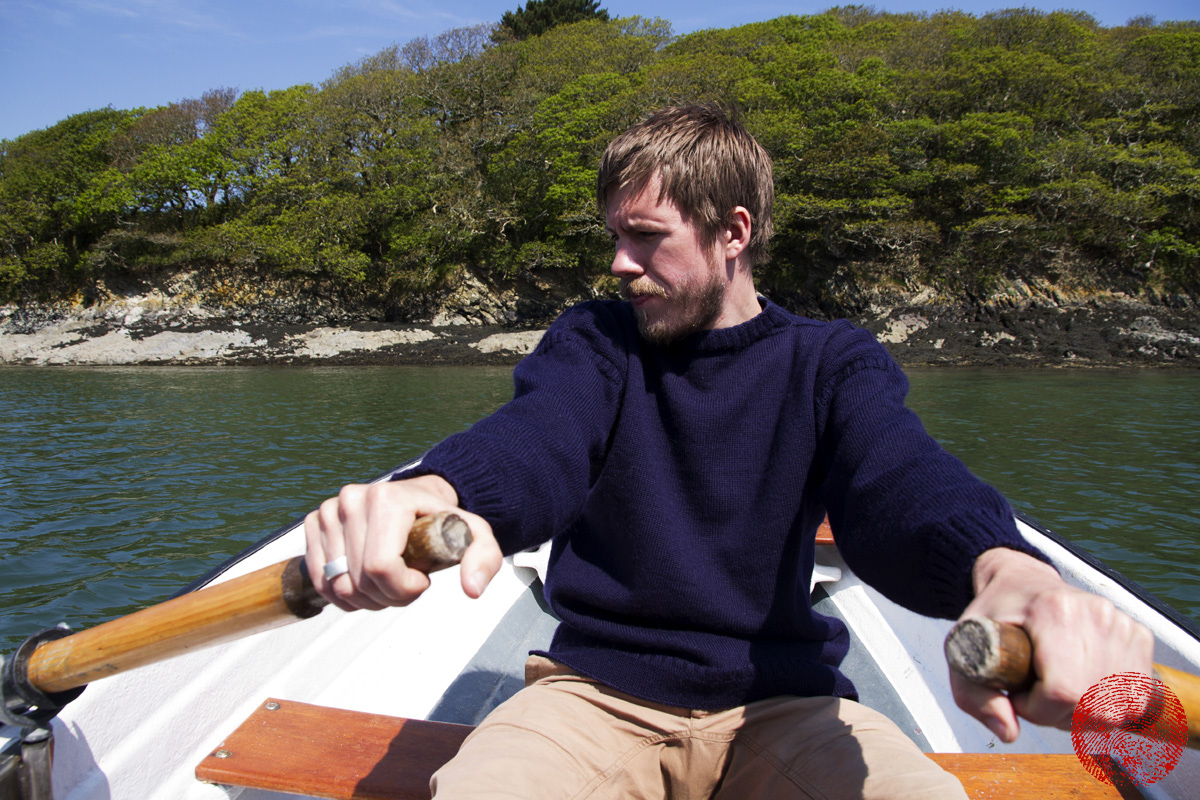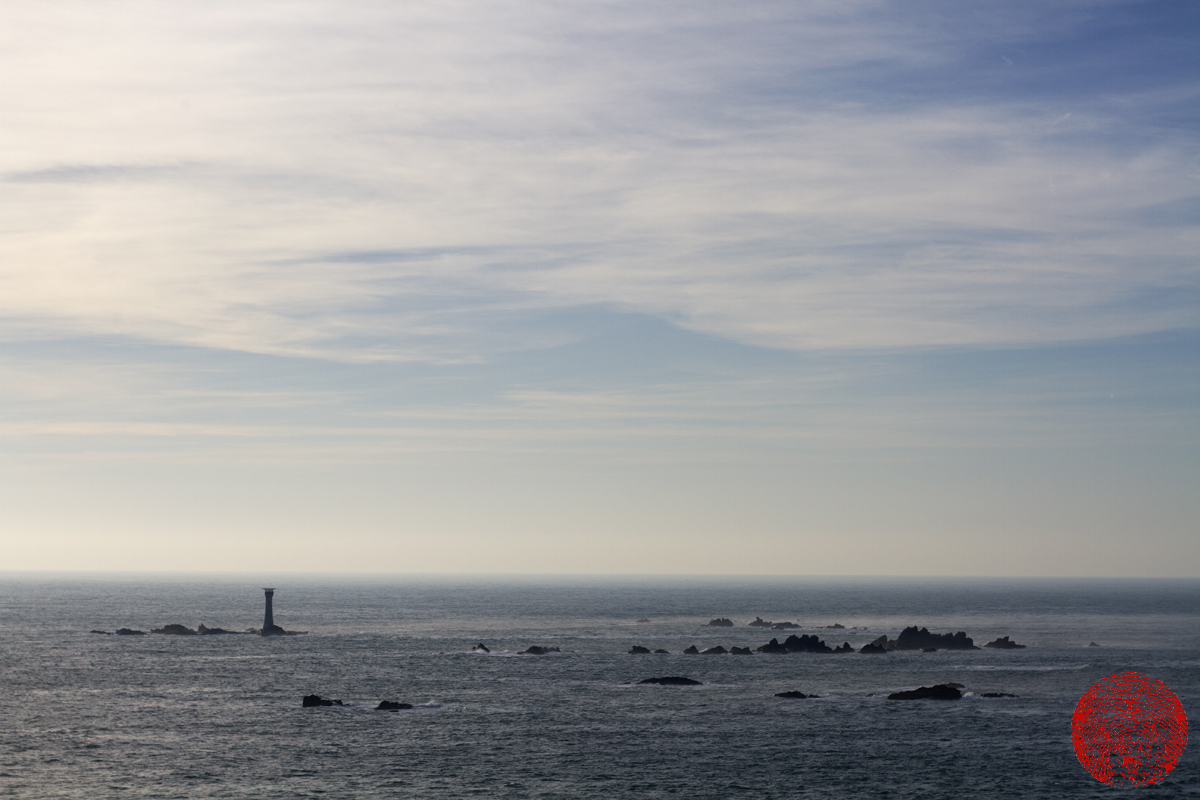The Guernsey

Throughout the 17th Century, back when stockings were the height of fashion, the highest fashion stockings that your guineas could buy were made on the island of Guernsey. Word has it that Elizabeth I wore them, Admiral Lord Nelson endorsed them as part of Naval uniform, and that Mary Queen of Scots wore Guernsey stockings at her execution. When stockings fell from favour however, the fishermen’s wives of the Channel Island Bailiwick stepped up and saved the island’s knitwear industry with their classic and practical jumpers.
Yours truly, rowing ashore with the help of my navy blue nautical knitwear.
Originally hand-knitted using tightly twisted woollen yarn that was rich in lanolin, the guernsey was and is a warm and practically waterproof (thanks to the waxy lanolin) garment, with a symmetrical front and back so that it can be worn out evenly. My friend Matt who was born and raised on Guernsey claims that the “back-to-front” style meant that fishermen could wipe their fish-gut caked hands on the front and then just turn it around, so that they could carry on as if they weren’t covered in blood and slime. The distinctive ribbed pattern at the top of the sleeves represents a ship’s rope ladder, the garter stitch panel along the bottom depicts waves breaking on a beach and the stitching on the shoulders represents pebbles, stones and sand. Guernseys are still produced on the island by a team of six or seven people at Guernsey Woollens, and whilst you can purchase one in a range of colours most people apparently still choose navy blue – and why wouldn’t you? There are some classic items of clothing out there that have long stood the test of time and will no-doubt continue to do so, and this is surely one of them. If you ever find yourself having to pack one jumper, and one jumper alone, then try your best to make it a guernsey.
Les Hanois Lighthouse off the coast of Guernsey was constructed using Cornish granite with the blocks dovetailed together both laterally and vertically so that once set in place they could not be separated without being broken.



